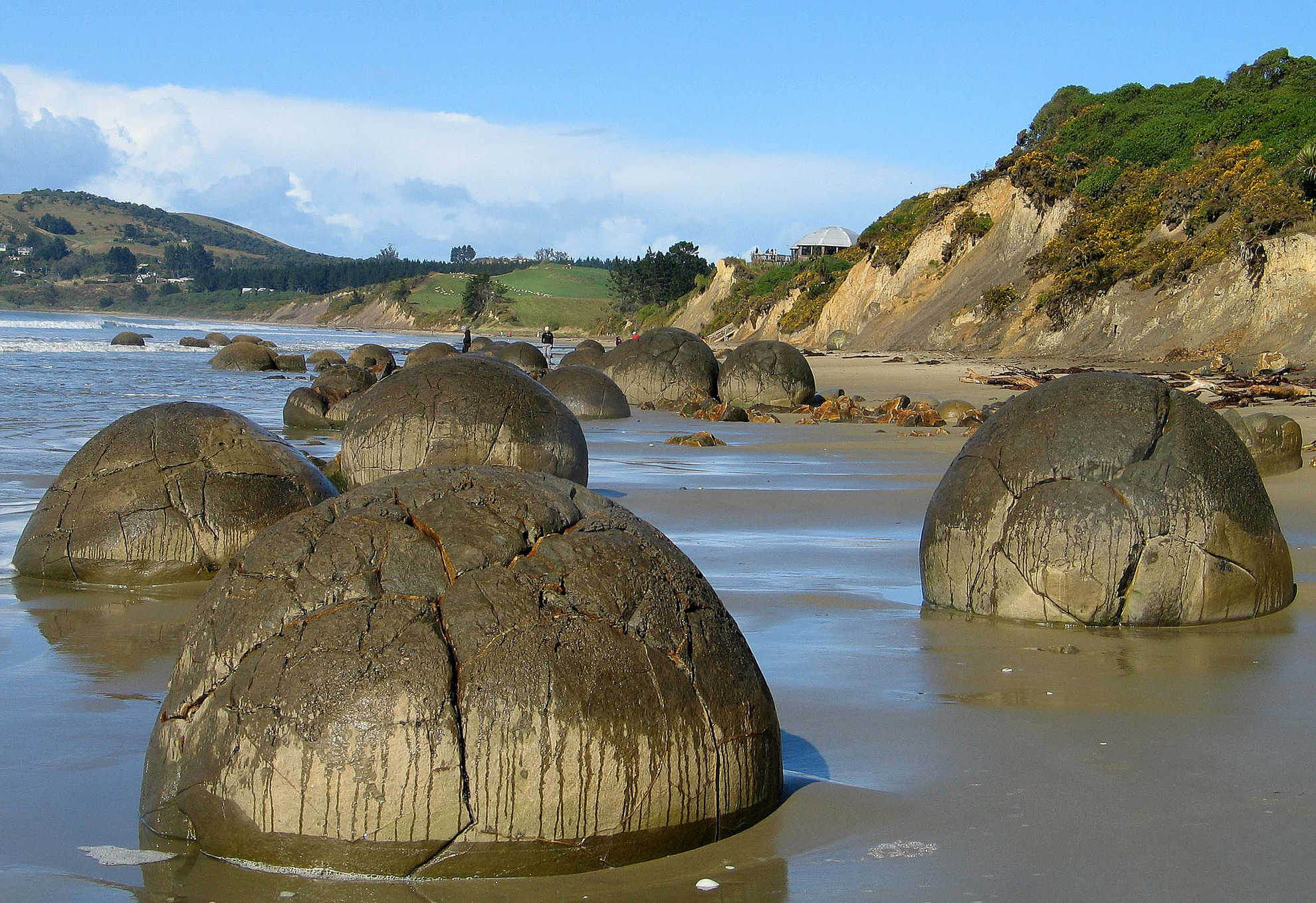Coastal Processes
As the sea level stabilised around 6000 years ago, 6ef81252-40ae-4cb4-b503-2506c9c2aded coastal processes driven by winds, waves and currents began to sculpt the edges of the coastline. Rocks and cliffs were cut back, bays were carved out of soft rock, harbour entrances were straightened with bars and spits, and pieces of the coast were joined together with sand and gravel.
One of the most influential processes in the creation of coastal environments today is the transportation and deposition of sediment. Much sediment arrives at the coast from numerous rivers. White quartz sand washes along the North Island’s east coast, black iron-rich sand is deposited along the west coast beaches, and gravel from braided river systems builds up along the east coast of the South Island. Eroding cliffs and offshore continental shelf sediment also provide sources of materials for the coast. Other processes which influence the coastal environment include longshore drift, winds and wave erosion.
These coastal processes can produce and expose some interesting features. Wave-cut platforms can uncover fossils that were embedded in old marine sedimentary rocks millions of years ago, such as those found around Motutapu Island and in the inner Hauraki Gulf. Rare geological features can also be revealed by weathering from wave action, such as the unusual Moeraki Boulders north of Dunedin and the pancake rocks at Punakāiki near Greymouth.

Last updated at 2:12PM on February 25, 2015